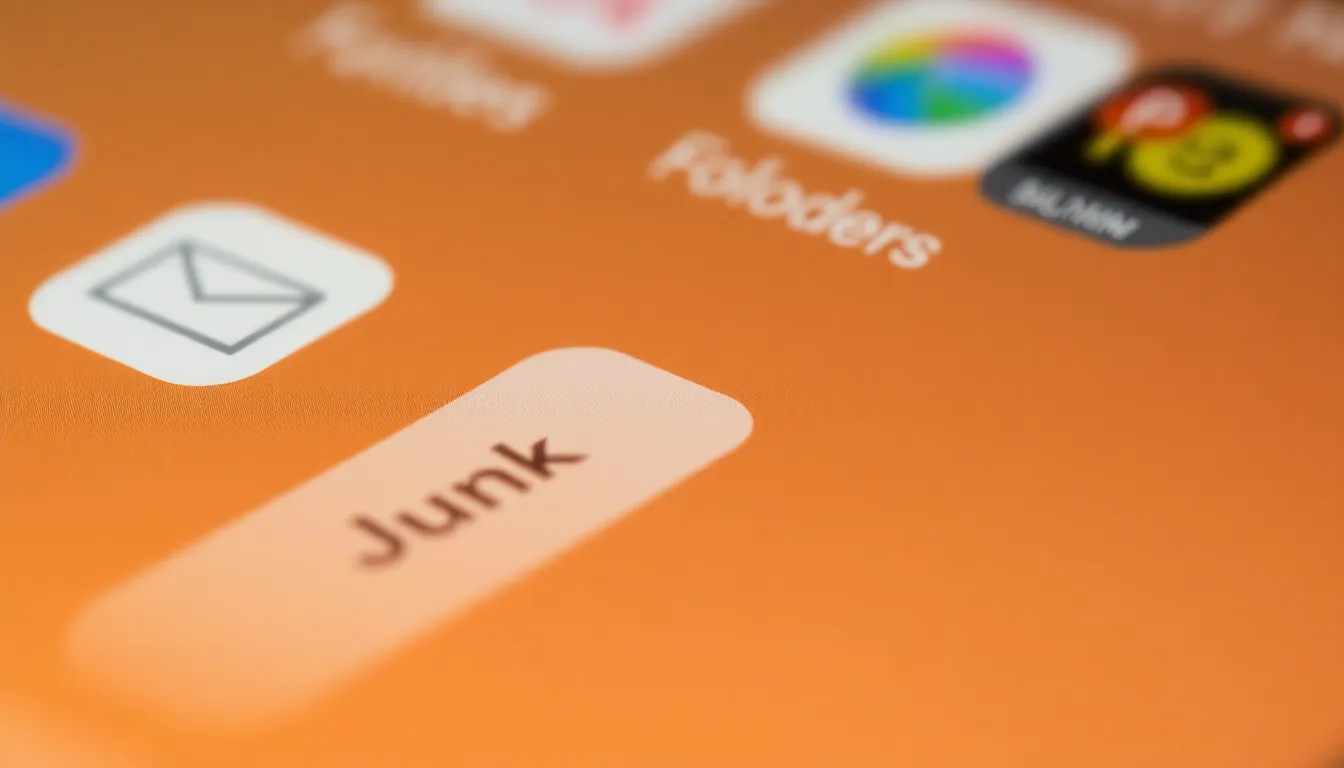Table of Contents
ToggleEver wondered where all those mysterious emails go to die? If you’ve been scratching your head over your iPhone’s spam folder, you’re not alone. Many users navigate their inboxes with the grace of a cat on a hot tin roof, only to realize they’re missing out on important messages buried in the depths of their devices.
Understanding Spam Folders on iPhone
Spam folders play a crucial role in managing email on iPhones. Users often encounter annoyance when important emails end up in these folders, making it essential to understand their function.
What Is a Spam Folder?
A spam folder is a designated space for unwanted or unsolicited emails. Email providers use filters to identify spam, preventing it from cluttering the primary inbox. It accumulates messages suspected of being promotional, fraudulent, or irrelevant. Users should know that messages within this folder might be correctly categorized as spam or mistakenly filtered. Reviewing this folder regularly helps ensure no important communication slips through the cracks.
Why It’s Important to Check Your Spam Folder
Checking the spam folder is vital for effective email management. Users risk missing critical information if they ignore this folder. Spam filters often mistakenly classify legitimate messages as spam, especially from new contacts or unfamiliar sources. Regularly reviewing the spam folder helps identify such messages. Besides, it enables users to mark legitimate emails as “not spam,” improving the accuracy of future spam filtering. Over time, frequent checks enhance the overall email experience, contributing to better organization and efficiency.
Finding the Spam Folder in Mail App

Finding the spam folder on an iPhone involves a couple of straightforward steps. The Mail app plays a crucial role in email management and helps users filter out unwanted messages.
Accessing the Mail App
Users can begin by tapping on the Mail app icon, typically located in the home screen. Once the app opens, they’ll see their list of email accounts. Selecting the relevant account shows the available mailboxes. The interface presents different folders, making navigation user-friendly.
Locating the Spam Folder
Locating the spam folder requires looking under the list of mailboxes once an account is chosen. The folder may be labeled as “Junk” or “Spam,” depending on the email provider. Tapping on this folder displays all filtered messages. Reviewing this folder regularly keeps users updated on any legitimate emails that may have been misclassified.
Using Third-Party Email Apps
Many users prefer third-party email apps due to their enhanced features and customization options. These apps often include specific tools for managing spam effectively.
Popular Email Apps and Their Spam Features
Gmail, Outlook, and Spark are popular choices with robust spam filtering. Gmail uses advanced algorithms to identify unwanted emails, automatically moving them to the Spam folder. Outlook allows users to flag messages as junk, which helps improve future filtering accuracy. Spark offers a dedicated spam folder, providing easy access to blocked emails. Each app provides notifications for new spam, ensuring users stay informed about unwanted messages.
How to Find Spam in Third-Party Apps
Finding the spam folder varies slightly by app. In Gmail, users tap the menu icon and select “Spam” from the sidebar. Outlook users access the “Junk Email” folder from the left-hand navigation pane. Spark users simply click “Spam” in the inbox view, which lists potential junk emails. Regularly checking these folders helps users identify misclassified messages, enhancing email management overall.
Tips for Managing Spam Emails
Managing spam emails efficiently increases productivity. Users can take specific steps to reduce unwanted messages and improve their inbox experience.
Marking Emails as Spam
Marking emails as spam helps providers learn users’ preferences. Users can select the unwanted email and choose “Mark as Spam” to notify the provider. This action enhances future filtering, leading to fewer similar emails. The process varies slightly among email providers. In Gmail, users can find the option in the three-dot menu. Outlook users see a “Junk” button at the top. Regularly marking spam improves overall email organization. Misclassified legitimate emails can be restored to the inbox easily, reinforcing effective filtering.
Unsubscribing from Unwanted Emails
Unsubscribing from unwanted emails reduces clutter over time. Many newsletters and promotional emails include an unsubscribe link at the bottom. Users can click this link to stop receiving further communications. Consistently identifying and unsubscribing improves inbox management. Some email apps provide bulk unsubscribe features, simplifying the process. In Gmail, users can utilize the “Unsubscribe” button next to the sender’s address. Taking the time to unsubscribe regularly decreases spam and enhances email efficiency.
Finding the spam folder on an iPhone is crucial for effective email management. By regularly checking this folder users can ensure they don’t miss important messages that may have been misclassified. Understanding the features of both the native Mail app and popular third-party email apps can significantly enhance one’s email experience.
Implementing strategies like marking unwanted emails as spam and unsubscribing from unnecessary newsletters can further streamline inbox management. With these practices in place users can navigate their email more efficiently and maintain better control over their communications. Taking these steps will ultimately lead to a more organized and productive email experience.




